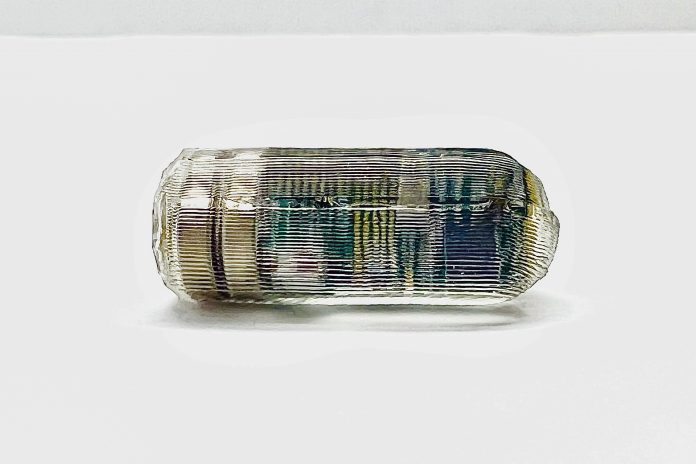
Researchers at MIT and the California Institute of Technology have developed a small, ingestible electronic sensor, whose location can be monitored, to help record symptoms of gastrointestinal disorders and reduce the need for more invasive screening.
The developers think the sensor could be particularly useful for diagnosing gastrointestinal motility disorders such as gastroesophageal reflux disease and gastroparesis, as they are able to track its location and speed of progress through the gastrointestinal tract using electromagnetism.
“Many people around the world suffer from gastrointestinal dysmotility or poor motility, and having the ability to monitor gastrointestinal motility without having to go into a hospital is important to really understand what is happening to a patient,” said Giovanni Traverso, an assistant professor at MIT and a gastroenterologist at Brigham and Women’s Hospital, who co-led the work in a press statement.
The field of ingestible biosensors has been developing rapidly since the 1990’s and there are now a number of different types of ingestible biosensor available. For example, capsule endoscopes that can be swallowed and take images of the gut as they progress through the digestive system.
As reported in Nature Electronics, Traverso and colleagues specifically aimed to develop an ingestible device that is location aware that could be used to help diagnose gastrointestinal motility disorders that can be difficult or invasive to diagnose by other means.
The electronic sensor can be tracked using electromagnetism, because it contains a tiny magnetic sensor, as well as a wireless transmitter that can send information to a nearby computer or smartphone. An electromagnetic coil located outside the body can detect the location of the sensor as it moves through the stomach and bowels.
“Because the magnetic field gradient uniquely encodes the spatial positions, these small devices can be designed in a way that they can sense the magnetic field at their respective locations,” said Saransh Sharma, a graduate student at Caltech, and first author on the paper. “After the device measures the field, we can back-calculate what the location of the device is.”
The team have also developed a second sensor that remains outside the body and acts as a known reference point for the device measuring the movement of the ingestible sensor.
“Using an external reference sensor helps to account for the problem that every time an animal or a human is beside the coils, there is a likelihood that they will not be in exactly the same position as they were the previous time. In the absence of having X-rays as your ground truth, it’s difficult to map out exactly where this pill is, unless you have a consistent reference that is always in the same location,” said co-author Khalil Ramadi, a former MIT graduate student and postdoc who is now an assistant professor of bioengineering at New York University.
The current device is a prototype, but performed well in a study in pigs. The current version of the system takes measurements at preset internals following a trigger signal from a smartphone. The electromagnetic sensor needs to be within 60 cm of the patient or less, but does not need to be large so could potentially be carried around by a patient to make the system more usable in real-life scenarios outside of a clinic or hospital.
The researchers now plan to develop manufacturing processes for the system and further validate the device in animals, before testing it in human clinical trials if funding allows.











